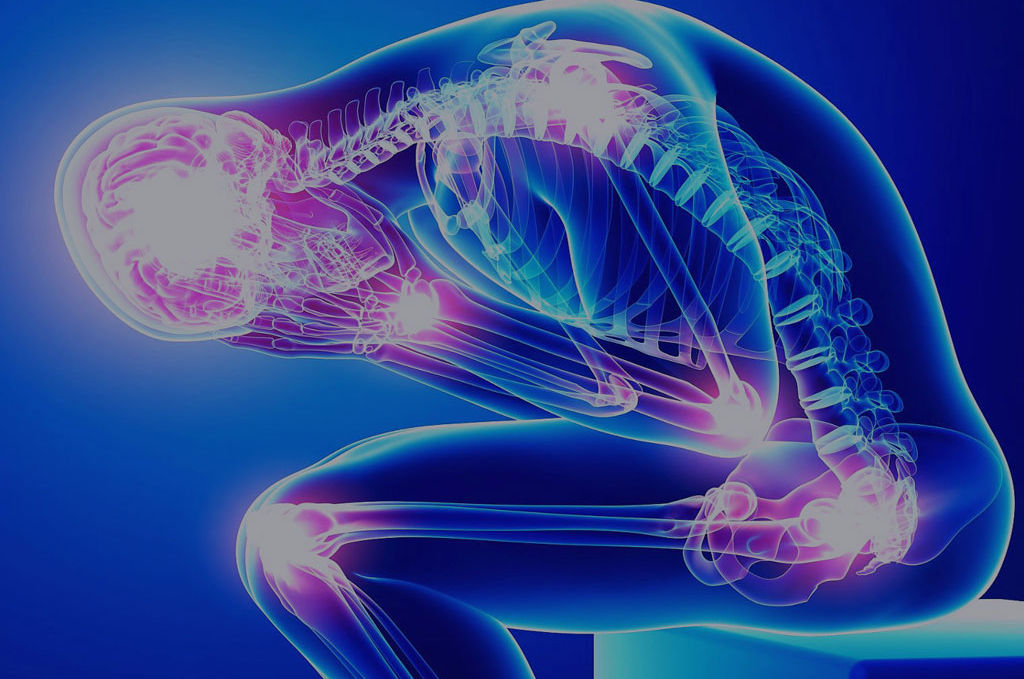Treatment of Diseases of Bone Joints
From a traumatic leg fracture to gradually worsening arthritis of the hands, disorders affecting the bones and joints come in many forms. Without proper treatment, bone and joint conditons can lead to chronic pain and disability.
Bone Disease Types
Even among bone diseases, symptoms you experience, specialists you see and treatment you receive are quite varied – for example, depending on whether you have osteoporosis or bone cancer.
Common bone diseases in adults and children include the following:
Osteoporosis. One of the most prevalent bone conditions, osteoporosis involves bone loss, leading to weakened bones that are more likely to break. Osteoporosis is an invisible condition, often doing its damage without people realizing they have it. More than 53 million people in the U.S. either have osteoporosis or are at high risk for developing it, according to the National Institute of Arthritis and Musculoskeletal and Skin Diseases.
Metabolic bone diseases. Osteoporosis is one of several metabolic bone diseases. These are disorders of bone strength caused by mineral or vitamin deficiencies (such as vitamin D, calcium or phosphorus) that result inabnormal bone mass or structure. Osteomalacia (softening of the bones), hyperparathyroidism (overactive gland leading to bone calcium loss), Paget disease of bone (abnormally large, weakened bones) and developmental bone disorders affecting children are all different types of metabolic bone diseases.
Fracture. Acute fractures are usually due to trauma, although they can be related to bone cancer. “Fractures are very dependent on patient demographics,” says Dr. Gerardo Miranda-Comas, director of the sports medicine fellowship in the Department of Rehabilitation and Human Performance at Icahn School of Medicine at Mount Sinai, in New York City. For instance, children’s bones are more flexible and resilient, and fractures heal more quickly. Kids are more likely to have wrist fractures while breaking a fall during sports or at play. Older adults are more vulnerable to falls and hip injuries because of balance issues, and as their bones may be more fragile, are likelier to break their hips.
Stress fracture. Also called overuse fractures, stress fractures are more common in active people like runners.
Bone cancer. Cancer that originates in the bone, called primary bone cancer, is rare, accounting for less than 1% of all new cancers diagnosed, according to the National Cancer Institute. Cancer that spreads to the bones from other parts of the body is more common, such as metastatic tumors from prostate or breast cancer. Multiple myeloma, a type of blood cancer, interferes with bone marrow function and new bone production in the hips, pelvis, ribs, shoulders and spine, increasing the risk of fracture.
Scoliosis. Abnormal, side-to-side curvature of the spine, resulting in an S- or C-shaped appearance when seen from behind, is called scoliosis. It’s commonly diagnosed in infants or children, but can persist into adulthood.
Joint Disease Types
Arthritis is a leading cause of disability worldwide. By 2040, nearly 80 million U.S. adults will have some form of arthritis diagnosed, according to the Centers for Disease Control and Prevention. Arthritis falls into two basic categories: osteoarthritis and autoimmune joint disease. They have contrasting causes and symptoms and require different care.
Common joint conditions include the following:
Osteoarthritis. The most common type, osteoarthritis is the “wear-and-tear” form that increases with age. Cartilage that normally cushions the joint breaks down over time, leading to stiffness and pain, especially with movement. With hip arthritis and knee arthritis, walking becomes more difficult as pain builds and flexibility decreases. Adults in their 50s and older are more likely to develop this chronic, progressive disease, and women are more vulnerable.
Rheumatoid arthritis. Rheumatoid arthritis is an autoimmune condition affect the lining of the joints. Cells of the immune system that normally don’t belong in the joints accumulate there in large numbers, Fox says. As the immune cells interact with the local joint cells, he explains, it causes ever-increasing inflammation, with eventual damage and destruction of cartilage and bone.
Spondyloarthritis. Also known as spondylitis, this umbrella term covers certain other rheumatoid diseases. Axial spondylitis involves inflammation in the spine and can eventually lead to spinal fusion, or ankylosing spondylitis. Enteropathic arthritis is a possible complication of inflammatory bowel diseases like ulcerative colitis. Psoriatic arthritis, which is associated with the skin condition psoriasis, tends to affect the joints of the hands and feet.
Juvenile idiopathic arthritis. Also known as juvenile rheumatoid arthritis, JIA is the most common chronic joint condition in kids. In this autoimmune condition, the child’s immune system attacks the body’s own healthy tissue. It’s called “idiopathic” because the cause is unknown. Inflammation from JIA may affect the muscles, joints, ligaments, internal organs and even the eyes. An added concern is that JIA can alter children’s normal growth.
Lupus. This autoimmune condition affects various parts of the body, including the skin, internal organs, blood, brain, bones and joints. Inflammation caused by lupus can trigger arthritis, particularly in the hands, elbows, shoulders, knees and feet.
Gout. This type of arthritis most often affects the joint connecting the big toe to the rest of the foot. In gout, excess uric acid – a waste product in the blood – forms crystals in the joints. Gout flare-ups, which are extremely painful, frequently strike in the middle of the night. Men are more likely to have gout, although women become more vulnerable after menopause.
Bursitis. Bursitis involves inflammation of the small, fluid-filled sacs called bursae that cushion the joints and surrounding tendons, muscles and bone. With bursitis, overuse or sudden injury of joints such as the hip, elbow and shoulder can lead to flare-ups. Bacterial infections can sometimes cause bursitis.
Causes and Risk Factors
Age, occupation, activity level, environmental factors and genetics all play a role in bone disease risk, says Miranda-Comas, whose specializes as a physiatrist, or physical medicine and rehabilitation physician. People who work on their feet all the time or whose jobs involve heavy labor are at higher risk of bone conditions. Low sun exposure and low vitamin D also contribute. Too little physical activity puts people at risk for osteoporosis, so highly inactive people may be more vulnerable to fractures.
Osteoarthritis is on the rise, particularly when it involves weight-bearing joints such as the hips and knees, as the obesity epidemic continues, Fox notes. Gout is also partially tied to excess weight.
For rheumatoid arthritis, juvenile arthritis and spondyloarthritis, rates are fairly stable, Fox says. Family history, being middle aged, smoking and being a woman increase the risk of developing rheumatoid arthritis. Environmental factors like being exposed to asbestos may also contribute.
Symptoms
How and when bone pain occurs, or subtle changes in how joints look and feel, can help indicate which type of condition you might have:
Joint stiffness (arthritis).
Decreased range of motion (arthritis).
Decreased joint function (arthritis).
Bumps on small finger joints (osteoarthritis).
Soft, warm, painful swelling of both wrists and hands, in large knuckles (rheumatoid arthritis).
Persistent morning joint stiffness (rheumatoid arthritis).
Fatigue and whole-body symptoms (rheumatoid arthritis).
Bone pain at rest (systemic conditions like cancer).
Bone or joint pain with activity (overuse injury).
Gradual loss of height or stooped posture (osteoporosis).
Unexplained back pain (osteoporosis).
A shoulder or hip that’s higher than the other (scoliosis).
Leg-length discrepancy (various conditions).
Diagnosis
Diagnosis starts with a medical history and physical examination. “It’s a complete musculoskeletal exam, not just evaluating the joint or the area that’s injured,” Miranda-Comas says. “We look for modifiable risk factors like alignment. We look for muscle imbalance or muscle weakness. We look for asymmetry. Limb length plays a big role. Within those subtle signs, we expand our evaluation and questioning in terms of trying to look for environmental factors or just activity that exposes you to injury.”
Imaging tests such as X-rays, MIR and ultrasound help determine a condition’s severity. Your doctor may order blood tests that indicate inflammatory processes, as with rheumatoid arthritis. A bone density scan called a DEXA scan is used to evaluate osteoporosis.
Depending on your medical exam findings and test results, your primary care provider may refer you to a specialist to confirm the diagnosis and recommend treatment. Orthopedists, pediatric orthopedists, orthopedic surgeons, rheumatologists, physiatrists, orthopedic oncologists and physical or occupational therapists are among the health care providers you might see.
Treatment
Treatment takes different directions for rheumatoid and osteoarthritis. “We can treat rheumatoid arthritis and most patients will eventually respond to the medicines we use,” Fox says. “But we can’t cure it, meaning if we take away those medications, the arthritis can come back or will come back.”
For rheumatoid arthritis, medications to slow the disease process include older drugs like methotrexate (Trexall and others) and sulfasalazine (Azulfidine). Biologic drugs such as adalimumab (Humira) and etanercept (Enbrel) reduce inflammation by targeting the immune system. Low-dose steroids are sometime used for short-term treatment. Patients must be monitored for a variety of medication side effects.
For osteoarthritis, drug treatment is not as effective, Fox says. Surgical replacement of large joints, such as hip replacement or knee replacement, is needed in some cases.
“With most conditions, you would start considering surgery when pain is intractable, when function is compromised, when there’s failure of nonsurgical treatment in at least three to six months, in general, and with injury that might (involve) neurovascular compromise,” Miranda-Comas says.
For osteoporosis, medications called bisphosphonates, such as alendronate (Fosamax) and risedronate (Actonel), are the mainstay of drug treatment.
Chronic management for joint or bone pain starts with over-the-counter or prescription oral medications, and topical ointments, gels or sprays. Nerve-related pain medication might be needed for systemic bone or joint conditions.
Physical Activity
It might seem counterintuitive, but physical activity is important for treating and managing conditions like arthritis and preventing complications of being sedentary. Specific exercises, particularly resistance-training exercises, improve strength around the joints, Miranda-Comas says.
With osteoporosis, weight-bearing exercise activity is a key treatment. “In this population, for example, swimming should not be their main source of physical activity,” Miranda-Comas says.
Having a bone disease needn’t affect your quality of life, he emphasizes. Seeing an exercise specialist to find the proper physical activity for you, modifying activities and using assistive devices as needed can help keep you mobile and independent.


COSMETIC SURGERY
Lorem ipsum dolor sit amet, consectetur adipiscing elit. Ut elit tellus, luctus nec ullamcorper mattis, pulvinar dapibus leo.

COSMETIC SURGERY
Lorem ipsum dolor sit amet, consectetur adipiscing elit. Ut elit tellus, luctus nec ullamcorper mattis, pulvinar dapibus leo.

COSMETIC SURGERY
Lorem ipsum dolor sit amet, consectetur adipiscing elit. Ut elit tellus, luctus nec ullamcorper mattis, pulvinar dapibus leo.
